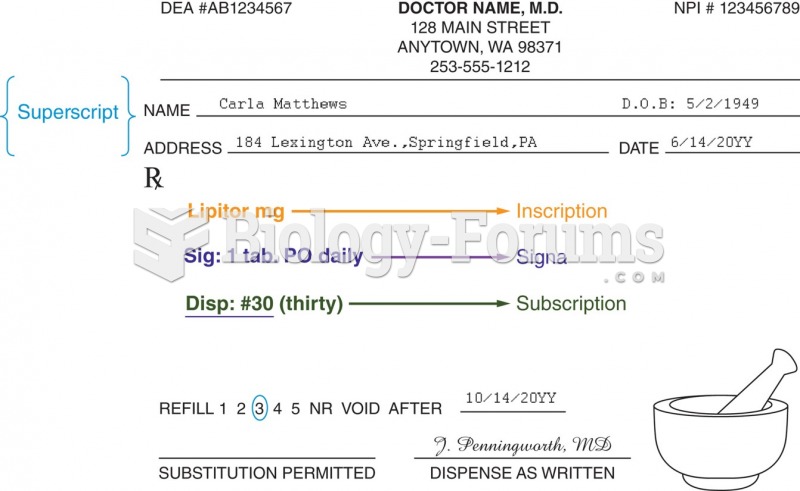Answer to Question 1
Correct Answer: 1,2,5
Rationale 1: Acebutolol is an oral cardioselective beta1 antagonist similar to metoprolol that is used for HTN and recurrent ventricular dysrhythmias; high doses can produce hypotension and bradycardia. Take the radial pulse before each dose and report an irregular pulse or if pulse drops below the parameter recommended by the health care provider.
Rationale 2: Cold, painful, or tender feet or hands, or other symptoms of Raynaud disease such as cyanosis, intermittent pallor, redness, or paresthesias, can occur as a side effect of this drug and should be reported. The health care provider might prescribe a vasodilator.
Rationale 3: Acebutolol must be taken exactly as prescribed, and dosage cannot be omitted, increased, or decreased, or the dosage interval changed at all. If the dose is forgotten, the same dose must be taken the next time.
Rationale 4: Acebutolol must be discontinued slowly over period of 1 to 2 weeks. Sudden withdrawal can result in anginal attacks and MIs in clients diagnosed with angina pectoris, or in thyroid storm in clients diagnosed with hyperthyroidism.
Rationale 5: Acebutolol must be discontinued slowly over a period of 1 to 2 weeks. Sudden withdrawal can result in anginal attacks and MIs in clients diagnosed with angina pectoris, or in thyroid storm in clients diagnosed with hyperthyroidism.
Global Rationale: Acebutolol is an oral cardioselective beta1 antagonist similar to metoprolol that is used for HTN and recurrent ventricular dysrhythmias; high doses can produce hypotension and bradycardia. Take the radial pulse before each dose and report an irregular pulse or if pulse drops below the parameter recommended by the health care provider. Cold, painful, or tender feet or hands, or other symptoms of Raynaud disease such as cyanosis, intermittent pallor, redness, or paresthesias, can occur as a side effect of this drug and should be reported. The health care provider might prescribe a vasodilator. Acebutolol must be discontinued slowly over a period of 1 to 2 weeks. Sudden withdrawal can result in anginal attacks and MIs in clients diagnosed with angina pectoris, or in thyroid storm in clients diagnosed with hyperthyroidism. Acebutolol must be taken exactly as prescribed, and dosage cannot be omitted, increased, or decreased, or the dosage interval changed at all. If the dose is forgotten, the same dose must be taken the next time. Acebutolol must be discontinued slowly over period of 1 to 2 weeks. Sudden withdrawal can result in anginal attacks and MIs in clients diagnosed with angina pectoris, or in thyroid storm in clients diagnosed with hyperthyroidism.
Answer to Question 2
Correct Answer: 1,3,5
Rationale 1: Increased peristalsis is a reaction consistent with the rest and digest response.
Rationale 2: Dilated pupils is a reaction consistent with the fight or flight response.
Rationale 3: Increased salivation is a reaction consistent with the rest and digest response.
Rationale 4: Bronchodilation is a reaction consistent with the fight or flight response.
Rationale 5: Decreased heart rate is a reaction consistent with the rest and digest response.
Global Rationale: Increased peristalsis, increased salivation, and decreased heart rate are reactions consistent with the rest and digest response. Dilated pupils and bronchodilation are reactions consistent with the fight or flight response.







